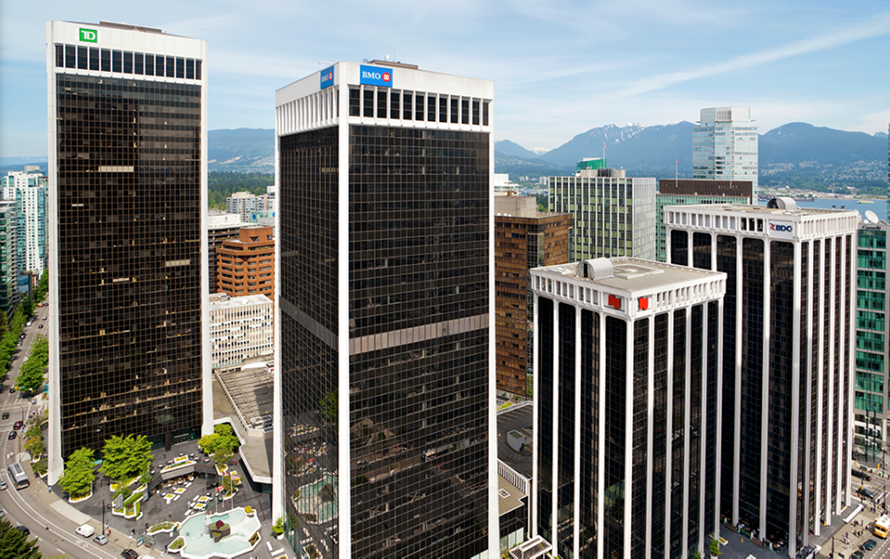It’s been a hell of a run.
The past five years – 2012 to 2017 – will likely go down as one of the most prolific and profitable periods in history for Metro Vancouver’s commercial real estate market.
Since 2012, almost $22.7 billion has been invested to acquire industrial, retail, office and multi-family assets in the province (and we still have three months to go!). In comparison, the previous five-year period, 2007 to 2011, totalled $7.03 billion. (For those really looking to have their minds blown: the first half of 2017 alone produced $5.09 billion in transactions.) These figures only include assets priced greater than $5 million. If properties that sold for less than $5 million are included, the total since 2012 would rapidly push north of $25 billion.
Even more astonishing: the $22.7 billion does not include the billions spent by investors, developers, and private companies and individuals to acquire ICI land throughout the province. And I’m not even considering the staggering value of residential land sales.
Some of the commercial real estate milestones achieved between 2012-2017:
- Largest commercial real estate transaction in B.C. history: Cadillac Fairview’s sale of a 50% non-managing interest in Pacific Centre and a portfolio of 12 Downtown Vancouver office buildings to the Ontario Pension Plan (25%) and Workplace Safety & Insurance Board (25%): $1.9 billion (first-half 2017)
- Largest retail real estate transaction in B.C. history: Ivanhoé Cambridge’s sale of Oakridge Centre to QuadReal Property Group: $961.3 million (first-half 2017)
- Largest industrial real estate deal in B.C. history: KingSett Capital’s sale of Hopewell Distribution Centre I & II to PIRET: $102.5 million (year-end 2012)
- Largest suburban office deal in B.C. history: Ivanhoé Cambridge’s sale of Metrotower I & II in Burnaby to a private investor: $274.4 million (first-half 2017)
- Largest secondary market retail deal in B.C. history: Canada Pension Plan’s sale of Hillside Centre in Victoria to Bentall Kennedy: Approximately $220 million (year-end 2013); followed by Morguard Investments & Greystone Managed Investments’ sale of Sevenoaks Shopping Centre in Abbotsford to a private purchaser: $214 million (first-half 2017)
- First billion-dollar commercial real estate deal in B.C.: GWL and Ivanhoé Cambridge’s sale of the Bentall Centre office/retail complex in downtown Vancouver: $1.055 billion (first-half 2016)
These highlights do not include the sale of other prominent downtown office buildings during that five-year period, including (but not limited to) the Royal Centre ($427.5 million), Bentall V ($401 million), 1500 West Georgia ($120.5 million) and the UK Building ($115 million).
While demand remains strong and investment activity will continue to occur at healthy levels, the environment that nurtured this performance is starting to undergo fundamental changes in 2017. Interest rates in the U.S. and Canada are on the rise, which increases the cost of capital and reduces debt-financed leverage. Benchmark bond yields are improving, which offer less risk and more liquidity as an investment than commercial real estate does, particularly in a market with the most cap rate compression in Canada. The Canadian dollar is strengthening, reducing the currency discount that had been available to foreign investors, thereby making B.C. real estate assets less attractive from a pricing perspective. The federal and provincial governments have recently changed and new taxation and regulations are being introduced that will impact investor confidence and behaviour. Global capital controls are tightening, particularly in China, where large institutions and private investors alike had been moving significant amounts of capital out of the country and investing in real estate around the world, including B.C.
What hasn’t changed is that commercial real estate assets in B.C. remain an integral part of any portfolio and remain sought after by local and foreign investors; however, the conditions that enabled the market to achieve record sale volume and pricing are shifting. Some investors may choose to take a pause in the next six to 12 months to get their bearings and prepare for what comes next.



